Catalogue > List by artist
Browse the entire list of Rencontre Internationales artists since 2004. Use the alphabetical filter to refine your search. update in progress
Ben Rivers
Ben Rivers
Catalogue : 2017There is a Happy Land Further Awaay | Experimental film | 16mm | color and b&w | 20:0 | United Kingdom | 2015
Ben Rivers
There is a Happy Land Further Awaay
Experimental film | 16mm | color and b&w | 20:0 | United Kingdom | 2015
THERE IS A HAPPY LAND FURTHER AWAAY (20 mins, S16, col/b+w, 2015) There Is A Happy Land Further Awaay (2015), captures the landscapes of the remote volcanic Republic of Vanuatu archipelago, before they were devastated by Cyclone Pam in early 2015, the footage becoming a ghostly document of an ecosystem now irrevocably altered. A hesitant female voice reads a poem by Henri Michaux, recounting a life lived in a distant land, full of faltering and mistakes. Island imagery of active volcanoes, underwater WW2 debris, children playing, and wrecked boats transform into intangible digital recollections of the island, made on the opposite side of the world. Images of the eroded land merge with eroding film, a lone figure on a boat drifts at sea.
Ben Rivers (born in 1972) is an artist and experimental filmmaker based in London. His work has been shown in many film festivals and galleries around the world and has won numerous awards. His work ranges from themes about exploring unknown wilderness territories to candid and intimate portrayals of real-life subjects. Rivers`s practice as a filmmaker treads a line between documentary and fiction. Often following and filming people who have in some way separated themselves from society, the raw film footage provides Rivers with a starting point for creating oblique narratives imagining alternative existences in marginal worlds. Rivers uses near-antique cameras and hand develops the 16 mm film, which shows the evidence of the elements it has been exposed to – the materiality of this medium forming part of the narrative.
Ben Rivers
Catalogue : 2009Ah, Liberty! | Experimental doc. | 16mm | black and white | 16:0 | United Kingdom | 2008

Ben Rivers
Ah, Liberty!
Experimental doc. | 16mm | black and white | 16:0 | United Kingdom | 2008
A family?s place in the wilderness, outside of time; free-range animals and children, junk and nature, all within the most sublime landscape. The work aims at an idea of freedom, which is reflected in the hand-processed Scope format, but is undercut with a sense of foreboding. There?s no particular story; beginning, middle or end, just fragments of lives lived, rituals performed.
Ben Rivers studied Fine Art at Falmouth School of Art. Since then he has worked predominantly in 16mm film, showing in galleries and international festivals, where he has won a number of awards. Most recent shows include; `If` Bloomberg Space, London; `Nought to Sixty`, ICA, London; `On Overgrown Paths` Permanent Gallery, Brighton.
Catalogue : 2008The Coming Race | Experimental film | 16mm | black and white | 5:0 | United Kingdom | 2006

Ben Rivers
The Coming Race
Experimental film | 16mm | black and white | 5:0 | United Kingdom | 2006
The Coming Race (2006, 5 min, 16mm, b/w, Ireland) A hand processed film in which thousands of people climb a rocky mountain terrain. The destination and purpose of their ascension remains unclear. A vague, mysterious and unsettling pilgrimage fraught with unknown intentions. The title ?The Coming Race? is after a Victorian novel by E.G.E. Bulwer-Lytton, about a race of people who live under a mountain.
Studied Fine Art at Falmouth School of Art. Co-founded and programmed Brighton Cinematheque from 1996-2005, while developing his artistic practice -predominantly working with moving-image. He has exhibited at many international film festivals and galleries, and won various awards, most recently Jury Prize at IFF Rotterdam. He has been the recipient of a number of commissions, most recently a London Artists Film and Video Award, for which he will make a new work: « Origin of the Species ». Current/upcoming shows include 'If' Bloomberg Space, London, 'Art with Strangers' Turnpike Gallery, Leigh, and solo show with Measure, London, and retrospective screenings in Chicago, Hull IFF and Courtisane, Ghent.
Catalogue : 2007The Hyrcynium Wood | Experimental film | 16mm | black and white | 3:0 | United Kingdom | 2005
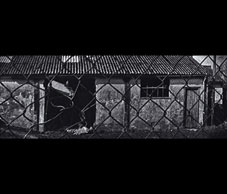
Ben Rivers
The Hyrcynium Wood
Experimental film | 16mm | black and white | 3:0 | United Kingdom | 2005
A fragmented narrative and exploration of abandoned spaces, using film sounds and music to create suspense and play with audience expectations.
Ben Rivers studied Fine Art at Falmouth School of Art. Since then he has worked predominantly in 16mm film, showing in international festivals, galleries, and UK theatres. In 1996 he co-founded and has since co-managed/programmed Brighton Cinematheque.
Faozan Rizal
Catalogue : 2007Yasujiro Journey | Experimental fiction | dv | color | 46:0 | Indonesia | 2006
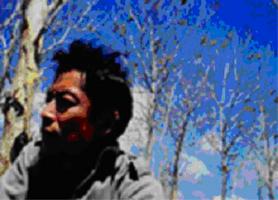
Faozan Rizal
Yasujiro Journey
Experimental fiction | dv | color | 46:0 | Indonesia | 2006
"Yasujiro's journey" is a portrait of a fictional wandering, that of Yasujiro Yamadawho, who, in 2002, travelled in Indonesia in search of his grandfather, whose name he inherited. This grandfather had apparently been a Japanese soldier who survived a plane crash above Indonesia, on his way to Pearl Harbour in 1942, but who never returned home. The journey is not as much a quest in the literal sense to find the elderly man, as it is a spiritual search through this foreign landscape his ancestor crossed. The fact that he doesn't find what he is looking for, and that he doesn't find himself, is particularly significant in one scene, in which he piles up stones until filling the height of the screen, then moves away, unsatisfied, knocks them over, and builds a new mound. The sound of the wind, very present throughout the film, functions as a warning, as if a Socratic demon was warning him of an error. The theme of the journey is central in this film, and in the filmmaker's works. He questions his native country and the former generations who never lived in an urban environment. Faozon Rizal also wills to explore the landscape from a foreigner's point of view, and it is significant that the protagonist of this wandering is Japanese.
Faozan Rizal is a young Indonesian filmmaker. His films were the object of an unofficial retrospective at the 18th International Singapore Film Festival in 2005. He has produced several experimental short films or films situated at the frontiers of various practices. He explores the qualities and textures of a film and the regions between cinema and photography. He has also produced a series of medium-length films of about thirty minutes, in collaboration with the dancer Katia Engel, in which dance and photography are so intimately linked that it would be an error to describe them simply as experimental films. It would actually be very difficult to imagine the performance without its transcription on film. The interweaving of different art forms is not surprising in the work of Faozan Rizal, who studied and practiced Javanese Dance in his youth, then painting before joining the Fémis. He has been an actor, a director of photography, a screenwriter and a producer. His work goes beyond linear narration. He expresses feelings and conveys ideas through the juxtaposition of concrete and specific images, the repetition of movements and the use of long sequence shots. His films do not present a transparent narration, but the sound is highly significant. Rizal did not abandon the idea of storytelling, but he gave up what was not necessary to the core of narration, the core being the very essence of narration.
Riar Rizaldi
Catalogue : 2023Notes from Gog Magog | Experimental doc. | 0 | color | 19:32 | Indonesia | 2022
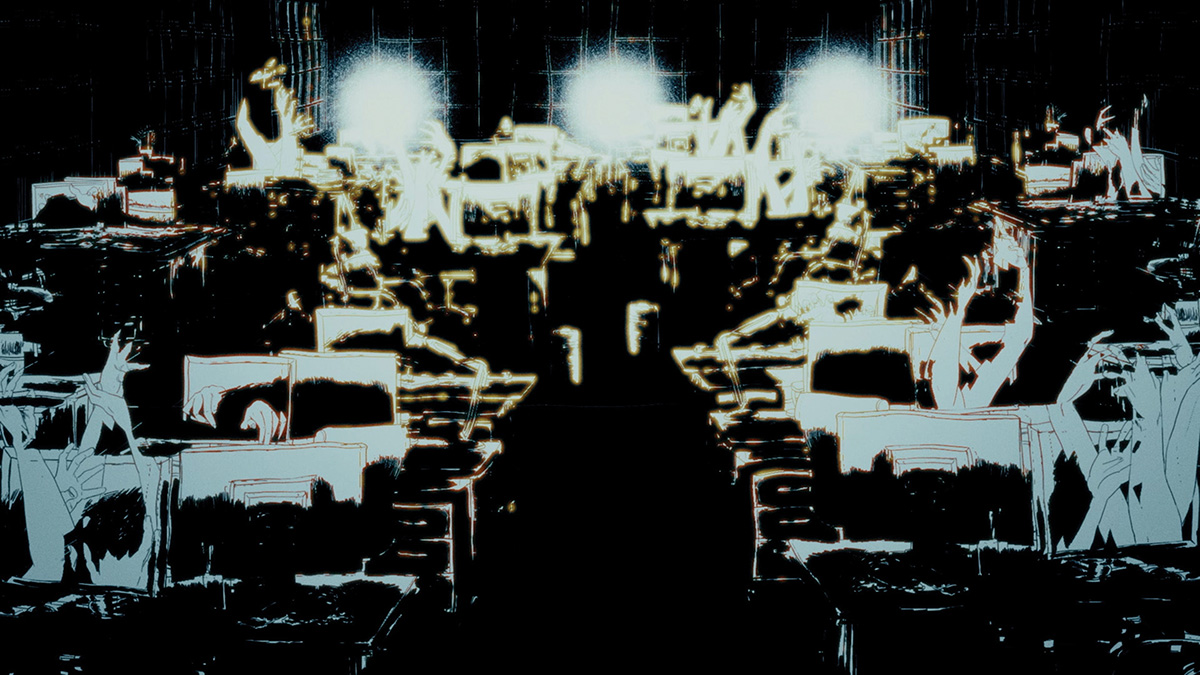
Riar Rizaldi
Notes from Gog Magog
Experimental doc. | 0 | color | 19:32 | Indonesia | 2022
An exploration of the interconnection between ghost stories, tech company culture in South Korea, and the economy of logistics in Indonesia told through a notebook/premake film and dossier of an unmade techno-horror feature-length film set in between port in Jakarta and an unnamed employee assistance programme office in Seoul.
Riar Rizaldi works as an artist and filmmaker. He works predominantly with the medium of moving images and sound, both in the black-box of cinema settings as well spatial presentation as installation. His artistic practice focuses mostly on the relationship between capital and technology, labour and nature, worldviews, genre cinema, and the possibility of theoretical fiction. His works have been shown at various international film festivals (including Locarno, IFFR, FID Marseille, Viennale, BFI London, Cinema du Reel, Vancouver, etc) as well as Centre Pompidou Paris, NTT InterCommunication Center Tokyo, Taipei Biennial, Istanbul Biennial, Venice Architecture Biennale, Biennale Jogja, National Gallery of Indonesia, and other venues and institutions. In addition, solo exhibitions and focus program of his works had been held at Batalha Centro de Cinema, Porto and Centre de la photographie Genève amongst others.
Riar Rizaldi
Catalogue : 2021Kasiterit | Experimental fiction | hdv | color | 18:22 | Indonesia | 2019
Riar Rizaldi
Kasiterit
Experimental fiction | hdv | color | 18:22 | Indonesia | 2019
One-third of the global tin supply is extracted from Bangka island in Indonesia. Tin is the most impacted mineral by the upcoming technological development, which includes artificial intelligence and technology for renewable energy. Natasha is a solar-powered A.I. voice, and in this film, they trace their genealogy and the truth of their origin; from the capital liquidity to labour dynamic. With their feminised voice—as quite often performed by other AI-powered voice assistants produced by tech-companies, Natasha narrates the emergence of tin in Bangka island and their existence from the perspective of tropical anthropology of nature, value theory, philosophy of time, genetic mutation, geopolitics, and automation.
Riar Rizaldi works as an artist and researcher. Born in Indonesia and currently based in Hong Kong. His main focus is on the relationship between capital and technology, extractivism, and theoretical fiction. Through his works, he questions the notion of image politics, materiality, media archaeology and unanticipated consequences of technologies. He is also actively composing and performing sonic-fiction using the methods of field recording and foley through programming language. Riar has also curated ARKIPEL Jakarta International Documentary & Experimental Film Festival — Penal Colony (2017), Internet of (No)Things (2018) at Jogja National Museum and co-curated Open Possibilities: 'There is not only one neat way to imagine our future' at JCC, Singapore & NTT ICC, Tokyo (2019-2020). His works have been shown at Locarno Film Festival, BFI Southbank London, International Film Festival Rotterdam, NTT InterCommunication Center Tokyo, and National Gallery of Indonesia amongst others.
Dylan Rizzo
Catalogue : 2025Nogooddream | Experimental film | 35mm | color | 3:14 | USA | 2024
Dylan Rizzo
Nogooddream
Experimental film | 35mm | color | 3:14 | USA | 2024
A man wakes up in a nightmare where he finds his grandmother's favorite tree burning outside his window, and is haunted by whispers of his childhood. The text is adapted from a page in my notes app dedicated to things my younger sister says that I find strange, or sad, or hopeful. The images are from a recurring nightmare. This film was shot on 500 ft of 5219 Kodak 35mm film stock.
Dylan Rizzo is a filmmaker and photographer based in New York City. He is currently pursuing his MFA in directing at Brooklyn College’s Feirstein Graduate School of Cinema. His work draws from his experiences as a native New Yorker and Chinese - Italian American, often dissecting the meaning of memory and how reconciling the past informs the process of becoming. Last year he completed a 18 min short film titled “One Day I’ll Open My Fist”, shot on location in NYC’s Chinatown on 16mm film. It is currently being submitted to festivals.
Louis Rizzo Naudi
Catalogue : 2026In Here | Experimental fiction | mov | color and b&w | 8:50 | United Kingdom | 2024
Louis Rizzo Naudi
In Here
Experimental fiction | mov | color and b&w | 8:50 | United Kingdom | 2024
“We dream of travelling through the universe… is the universe, however, not within us? We do not know the depths of our spirit. The mysterious path leads inwards. Eternity, with its worlds of past and future, is in us or nowhere. The outward world is the world of shadow; it throws its shadow into the realm of light. At present, it indeed appears so dark, lonely, formless inside; but how completely different it will seem to us when this eclipse has passed, and the body and shadow have moved away. We will enjoy more than ever, because our spirit has been deprived.” — Novalis, ‘Pollen’ (1798). Translated and adapted from the original German publication, with assistance from W. Hastie’s English translation in ‘Hymns and Thoughts on Religion’ (1888).
Louis Rizzo Naudi is a British-Maltese filmmaker. His practice explores the experience of the sublime and the constructed nature of visual perception, with his camera often focussed on natural phenomena, landscapes, and technology. He holds a B.A. in Film Studies from King’s College London, where he was awarded the Film Studies dissertation prize for his essay on the sublime in footage of the International Space Station, and an M.Sc. in Cognitive and Evolutionary Anthropology from the University of Oxford, where he researched how sublime experiences may lead to increased prosocial behaviours, such as generosity. His films have screened across Europe, including International Film Festival Rotterdam, Karlovy Vary International Film Festival, the British Film Institute, and the Tate St. Ives, and have also been used as relaxation aids in hospitals for patients undergoing medical procedures.
Michael Robinson
Catalogue : 2015The Dark, Krystle | Experimental fiction | dv | color | 9:34 | USA | 2013
Michael Robinson
The Dark, Krystle
Experimental fiction | dv | color | 9:34 | USA | 2013
The cabin is on fire! Krystle can't stop crying, Alexis won't stop drinking, and the fabric of existence hangs in the balance, again and again and again. – MR "The Dark, Krystle brilliantly re-purposes the artificiality of stock gesture, allowing viewers to see its hollowness and to feel it recharging with new emotional power. Equal parts archival fashion show and feminist morality play, Robinson’s montage rekindles the unfinished business of identity, consumption, and excess in 1980s pop culture." - Carrie Secrist Gallery, Chicago
Michael Robinson (b.1981) is an American film, video and collage artist whose work explores the joys and dangers of mediated experience, riding the fine lines between humor and terror, nostalgia and contempt, ecstasy and hysteria. His work has shown in both solo and group shows at a variety of festivals, museums, and galleries including The 2012 Whitney Biennial, The International Film Festival Rotterdam, The New York Film Festival, The BFI London Film Festival, REDCAT Los Angeles, MoMA P.S.1, The Sundance Film Festival, The Walker Art Center, Anthology Film Archives, Kurzfilmtage Oberhausen, Viennale, and Whitechapel Gallery in London. Michael was the recipient of a 2012 Creative Capital grant, a 2011-2012 Film/Video Residency Award from The Wexner Center for the Arts, a 2009 residency from The Headlands Center for the Arts, and his films have received awards from numerous festivals. He was featured as one of the “50 Best Filmmakers Under 50” by Cinema Scope magazine in 2012, and listed among the top ten avant-garde filmmakers of the 2000`s by Film Comment magazine. His work is distributed by Video Data Bank and Carrie Secrist Gallery in Chicago.
Andrea Robles, Adriana BRAVO
Catalogue : 2007El Fish | Animation | dv | color and b&w | 4:7 | Mexico | 2008
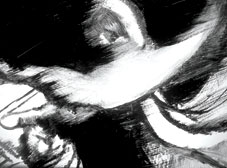
Andrea Robles, Adriana BRAVO
El Fish
Animation | dv | color and b&w | 4:7 | Mexico | 2008
This animation dives into the daily world of Benjamin. The soundtrack was constructed based on his emotional states. It is made by sounds produced by himself and by sounds that fascinate him. The images in this work are an attempt to interpret Benjamin′s perceptions and sensations.
Robles obtained a bachelor degree in Visual Communication in 1999. During her studies she took a workshop in animation where she made a spot for the UNICEF. This spot was awarded the first prize in the ″Television and Video Festival ANUIES 2000″ (National Association of Universities and Institutions for Education). In 2001 she formed the collaboration group dobleA (doubleA) together with Adriana Bravo. Since then they have produced all their work in collaboration. In 2002 Robles attended a workshop given by Jesse Lerner at the Centro de la Imagen (Image Center) where she created "Mirada pérdida" (Lost sight). It is an animation piece done with objects. In the same year she produced "Contemplación" (Contemplation) and "Experimento" (Experiment). She conceived the work "Anatomy of a Moth on 2004". This animation of pencil drawings won a grant from ″Consejo Nacional para la Cultura y las Artes″ (Arts and Culture National Council). During the same year she received the Jóvenes Creadores 2004-2005 stipend (Young Creators 2004-2005) from "Fondo National para la Cultura y las Artes" (Arts and Culture National Fund). Within this period Robles produced "Microftalmía" (Microphthalmie), an experimental animation of oil drawings on glass.
João Pedro Rodrigues
Catalogue : 2014O corpo de Afonso | | | | 32:0 | Portugal | 0
João Pedro Rodrigues
O corpo de Afonso
| | | 32:0 | Portugal | 0
How would it look like, the body of Dom Afonso Henriques, first king of Portugal, tutelary figure, subject to successive mythifications throughout Portuguese history?
Born in Lisbon in 1966. Pedro Rodrigues attended the Lisbon Film School, in which he graduated in 1989. From 1989 to 1996 he worked as assistant director and editor with well-known names of the portuguese cinema, such as Teresa Villaverde. His short ?Parabéns!? (1997) participated at the Cinema Festival of Venice of 1997 and received a special distinction of the Jury. And his feature, ?O Fantasma?, of 2000, received the Award for the Best Foreign Feature Film at the Cinema Festival of Belfort in the same year. Recently he directed ?Odete?, Special Mention from Cinémas de Recherche in Cannes 2005, Director?s Fortnight .
Fundacion Rodriguez
Francisco Rodriguez Teare
Catalogue : 2025Octubre al mediodía | Experimental doc. | 16mm | color | 12:0 | Chile | 2024
Francisco Rodriguez Teare
Octubre al mediodía
Experimental doc. | 16mm | color | 12:0 | Chile | 2024
A spring afternoon on the San Cristobal hill, in downtown Santiago de Chile. Four friends and a sound engineer talk about the events seen and experienced during the popular revolt that began in 2019 in Chile. The film brings to the surface certain conversations related to any revolution: hope, disillusionment, fire, torture and police violence. The name of the film comes from the poem April Noon by Eileen Myles.
Francisco Rodríguez Teare is a Chilean artist and filmmaker based in France with a moving image practice working predominantly with film, video and installation. Since 2015 he has been creating works and exhibiting them both in film festival circuits and contemporary art contexts. He has directed the shorts Appels téléphononiques, Una luna de hierro, Why are they equipped with eyes ?, Octubre al mediodía, El oro y el pez. The video installations and performances Gois, Colored Procession, This dream is mine and the hybrid feature film Otro sol. Recently his work has been presented at film festivals and museums as New Directors/New Films at MoMA, Toronto FIlm Festival, 62 New York Film Festival, Centre Pompidou, Taipei Biennial, Stedelijk Museum, Cinémathèque Française, Mar del Plata IFF, CPH:DOX, Shanghai IFF, IndieLisboa, FID Marseille, Viennale.
Alberto Rodríguez Collía
Catalogue : 2018Ley Aurea (Golden Law) | Experimental video | hdv | color | 7:4 | Guatemala, Brazil | 2014
Alberto RodrÍguez CollÍa
Ley Aurea (Golden Law)
Experimental video | hdv | color | 7:4 | Guatemala, Brazil | 2014
This video speaks about the exploitation and its institutionalized discrimination (economic and racial) and slavery. The location is Brazil, because this one of the most unequal countries worldwide and was the last to declare slavery illegal (Aurea Act of 1898).
Lives and works in Guatemala. With his work tries to explore the historical memory, sordid aspects of the human being and the ridicule of the societies that are imposed over others. He graduated as Engraver from Art School no. 10 of Madrid, with his final project received the Honourable mention at Aurelio Blanco awards. He was awarded with the residencies of FONCA / CASA of Oaxaca, Mexico; Des.Pacio of San Jose, Costa Rica, Fundaçao Armando Alvarez Penteado in Sao Paulo, Brazil, and AIT in Tokyo, Japan. Also participated in 32nd. Biennial of Ljubljana, in the XVI and XVII Biennial of Guatemala and the VII Central American Biennial. In 2007 he co-founded the TEGG, the only engraving workshop in Guatemala, where he teached and organized exhibitions related to graphic arts. From 2010 to 2014 he was in charge of the Cinematographic Art Center of the CCEG, coordinating films screenings and workshops of cinema. Rodriguez also coordinated the Contemporary Film Festival (MUCA) and has worked for the human rights oriented film festival “ Memoria, Verdad, Justicia ” since 2013. He participated in the films "Even the Sun has spots" that won "Prix Espérance" and "Honourable Mention" in the FID of Marseille.
Till Roeskens
Catalogue : 2010Vidéocartographies : Aïda, Palestine - Un tour à Beer Sheva | Experimental doc. | dv | black and white | 4:39 | Germany, Palestine | 2008
Till Roeskens
Vidéocartographies : Aïda, Palestine - Un tour à Beer Sheva
Experimental doc. | dv | black and white | 4:39 | Germany, Palestine | 2008
I have asked inhabitants of Aida Camp, Bethlehem, to draw maps of what they see around them. The drawing process as well as the stories related to those subjective geographies have been recorded on video. Through six chapters that form as many potentially independent short films, step by step you?ll discover the refugee camp and it?s surroundings, you?ll follow the routes of some persons and their adventurous attempts to deal with the state of siege they live under. Let?s call it a tribute to resistance by going around obstacles, in times where the very possibility of that resistance seems to be vanishing.
Till Roeskens, born in 1974 in Freiburg (Germany), lives in Marseille. Amateur of applied geography, Till Roeskens, as an artist, belongs to the family of explorers. His work develops in the confrontation with a given territory and those who try to draw their own ways within it. What he brings back from his explorations, be it a book, a video film, a slide show lecture or other light forms, is never meant to be a simple report, but an invitation to exercice one?s perception, a questioning about what we are able to seize from the infinite complexity of the world. His «attempts to find his bearings» are done with a constant concern to touch an uninformed audience and to make them become co-authors of the work. Exercises his art all around France, e.g. at Plateau arts center in Paris, Forteresse de Salses, Villa Saint Clair, Museum of Modern and Contemporary Art and CEAAC Strasbourg (City of Strasbourg Arts Prize), Language Plus (Quebec), Museum of Modern Art Collioure (Collioure Prize), diverse Regional Art Funds: Alsace, Languedoc-Roussillon and Provence where he is presently working on his first full-length documentary film.
Axel Roessler
Catalogue : 2010it's a small world | Experimental film | | color | 2:0 | Germany | 2009
Axel Roessler
it's a small world
Experimental film | | color | 2:0 | Germany | 2009
Die Idee zum Clip "It`s a small world" entstand, als ich in auf einem Flohmarkt in Los Angeles ein Fotoalbum kaufte, in dem alte Polaroidfotografien einer amerikanischen Familie zu sehen sind. Der kurze Film ist eine Art Hommage an das längst vergangene Südkalifornien der sechziger Jahre und stellt die Reise nach, die die fotografierten Personen damals unternomen haben.
Biographie Axel Rössler: - geboren 1966 in Langenhagen / Hannover - 1986 Abitur, danach Zivildienst - bis 1995 Studium an der Johann Wolfgang Goethe Universtät Frankfurt am Main, Diplomabschluß als Sprachsoziologe - parallel seit ca. 1990 verstärkt Interesse an Graphiksoftware, diverse Jobs die zum Glück ausreichend Zeit für die autodidaktische Aneignung allermöglichen Sound- und Graphikprogramme erlauben, Betrieb eines Schallplattenlabels für Singles (?Stetzer?) - 1998 Gründungsmitgleid von saasfee*, einem Label für Medien, Design, Kunst und elektronische Musik, dabei Schwerpunkt Animationen und 3D sowie Musiklabelarbeit - seit 2000 diverse Musikvideos, Auftragsarbeiten und Experimentalfilme, Ausstellungen u.a. in Genf, Basel, Turin, München, Hamburg und Frankfurt - seit 2006 verstärkte Arbeit an www.countrytrouble.com zusammen mit Ellen Wagner - seit längerem befreundet mit Bertram Ritter, der hier die Musik beigesteuert hat. Bertram ist aktiv in diversen Frankfurter Bands, aktuell als Schlagzeuger bei ?Das grüne Hemd?, ?Perfumed Chambers? und ?Nachttierhaus?. Auch als Solokünstler aktiv.
Alicja Rogalska
Catalogue : 2023Dark Fibres | Experimental video | 4k | color | 5:16 | Poland, Georgia | 2021
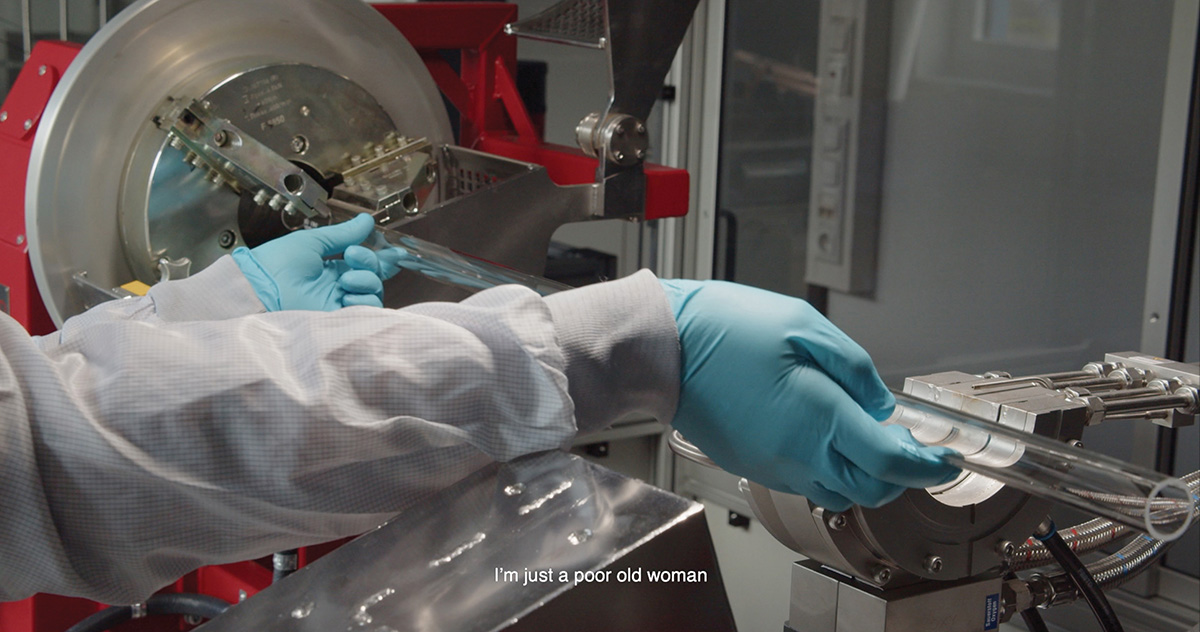
Alicja Rogalska
Dark Fibres
Experimental video | 4k | color | 5:16 | Poland, Georgia | 2021
A song about scavenging, economic exploitation and post-internet reality performed by a Georgian polyphonic choir and based on a story of Hayastan Shakarian - an elderly, illiterate woman from the village of Armazi near Mtskheta, who in 2011 allegedly cut the internet cable connecting Georgia and Armenia whilst looking for scrap metal to sell. The story became global news though Shakarian denied any involvement, famously saying she had never heard of the internet, and many people disputed its veracity. The lyrics were sung to the tune of Chakrulo, a medieval Georgian song about peasants preparing for armed rebellion against their feudal master. The song was sent into space in 1977 on Voyager 2.? Commissioned by Arts Territory for Myth exhibition, Artisterium Festival, Tbilisi (song), filmed at Fraunhofer Institute for Applied Optics and Precision Engineering IOF and supported by the DAAD Artists-in-Berlin program (video).?
Alicja Rogalska's practice is research-led and focuses on social structures and the political subtext of the everyday; she mostly works in specific contexts making situations, performances, videos and installations in collaboration with other people to collectively search for emancipatory ideas for the future. She recently presented her work at National Gallery of Art (Vilnius, 2023), Scherben, Berlin Art Prize (2022, winner), Manifesta 14 (Prishtina, 2022), Temporary Gallery (Cologne, 2021-22), Kunsthalle Bratislava (2021), Kunsthalle Wien (Vienna, 2020-21), OFF Biennale (Budapest, 2020-21), Art Encounters Biennale (Timis?oara, 2019), Tokyo Photographic Art Museum (2019), Biennale Warszawa (2019), Museum of Modern Art (Warsaw, 2019), Kyoto Art Centre (2019) and Muzeum Sztuki (?ódz?, 2019). Rogalska was a fellow of the DAAD Artists-in-Berlin program (2020-21), and took part in residencies at City of Women Festival (Ljubljana, 2019), Stuart Hall Library (London, 2019), Paradise AIR (Matsudo, 2018), Museums Quartier (Vienna, 2018) and IASPIS (Stockholm, 2017), amongst others.
Catalogue : 2018What If As If | Experimental video | hdv | color | 13:31 | Poland, United Kingdom | 2017
Alicja Rogalska
What If As If
Experimental video | hdv | color | 13:31 | Poland, United Kingdom | 2017
What if As If explores legal fictions in international immigration law in collaboration with refugees, asylum seekers and immigrants based in the UK who trained as lawyers in their countries of origin. The video was filmed in a former courtroom and greenscreen, a device for filmic fiction, is used throughout. Legal fictions are used in legal reasoning when something is believed or assumed to be true - they allow for the law to be applied, without changing its text. For example, a refusal to accept an inheritance is legally possible if the inheritor is declared dead and having died before the person who left the legacy; another example is corporate personhood - i.e. treating companies as if they were persons. Immigration law is full of such artificial constructions: legal fictions of sovereignty, political community, the concept of entry, as well as fictions in welfare and employment law, and finally - citizenship and its terms and conditions. The lawyers` expertise and legal imagination combined with their personal, embodied experience of being exposed to the inherent contradictions and absurdities of immigration law, influences the way they see law in society. Legal fictions are used in the video as a vehicle for questioning existing legal structures, a tool for creative lawmaking and exploring speculative legal frameworks as possible resistance.
Alicja Rogalska is a multidisciplinary artist based in London and Warsaw and working internationally. She graduated with an MFA in Fine Art from Goldsmiths College and an MA in Cultural Studies from the University of Warsaw. In 2017 she was an artist in residence at KulturKontakt in Vienna and IASPIS - Swedish Arts Grants Committee`s International Programme in Stockholm. She was also a recipient of 2016-17 Artsadmin Bursary in London. Exhibitions include: For Beyond That Horizon Lies Another Horizon, Edith-Russ-Haus für Medienkunst (Oldenburg, 2017), Gotong Royong. Things We Do Together, Centre for Contemporary Art Ujazdowski Castle (Warsaw, 2017), Dreams and Dramas. Law as Literature, nGbK (Berlin, 2017), Social Design for Social Living, National Gallery (Jakarta, 2016), All Men Become Sisters, Muzeum Sztuki (Åódź, 2016); No Need For References, Kunsthalle Exnergasse (Vienna, 2015); Critical Juncture, Kochi-Muziris Biennale (Kochi, 2014); A Museum of Immortality, Ashkal Alwan (Beirut, 2014), IMS Project, Flat Time House (London, 2013); Melancholy In Progress, Hong-Gah Museum (Taipei, 2012); Jour de Fête, The Private Space Gallery / LOOP Festival (Barcelona, 2011); To Look is to Labour, Laden Für Nichts (Leipzig, 2010) and No Soul For Sale, Tate Modern (London, 2010).
Graeme Roger, Kevin REID
Catalogue : 2006Critique of Styrofoam Villians at Chris' art Farm | 0 | dv | | 10:0 | United Kingdom, USA | 2004
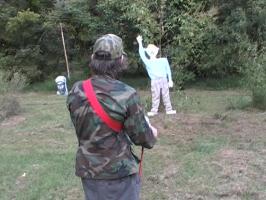
Graeme Roger, Kevin REID
Critique of Styrofoam Villians at Chris' art Farm
0 | dv | | 10:0 | United Kingdom, USA | 2004
Whilst on residency projects in Memphis and New York 2004, ROGER & REID used high powered potato canon`s to blast their way across the land of the free. In this piece they destroy villians as created by students of the Memphis School of Art. Further target practice was performed at PS1 MoMa New York, where the specially formed rock band`The Prairie Oysters` played with rock god `Justice` in a hail of haggis and jelly.
Graeme Roger & Kevin Reid studied at Duncan of Jordanstone College of Art in Dundee, Scotland & have worked collectively since 2002. They have shown their work through Europe and the USA.
Sophie Roger
Catalogue : 2016C'est donc un amoureux qui parle et qui dit : | Experimental film | hdv | color | 6:15 | France | 2015
Sophie Roger
C'est donc un amoureux qui parle et qui dit :
Experimental film | hdv | color | 6:15 | France | 2015
Pages arrachées du Fragment d`un discours amoureux de Roland Barthes dans un grenier de montagne. La réalisatrice regarde et dessine les paysages qu`elle voit au travers des planches ajourées. Un papillon la suit jusque dans la neige.
Depuis plusieurs années, le travail de Sophie Roger fait dialoguer dessin et vidéo, lectures et quotidien. Cinéma d`essayiste, elle travaille seule et prend le temps. Ses films arpentent ses territoires les plus intimes (maison, jardin) tout en gardant comme horizon une pensée de l`autre et de l`ailleurs.
Joyce Rohrmoser
Catalogue : 2011Surviving in China | Video | dv | color | 19:0 | China | 2007
Joyce Rohrmoser
Surviving in China
Video | dv | color | 19:0 | China | 2007
Surviving in China DVD 19 min, 2007 Ich lerne seit nunmehr 4 Jahren chinesisch. Seit gutem einem Jahr mache ich für eine italienische Firma Modefotos und Videos in China. In meiner Freizeit versuche ich das Leben dort zu meistern. Dafür habe ich eine Strategie entwickelt: Videominiaturen, in denen ich jeweils unterschiedliche Rollen übernehme. Es sind Situationen, die mir als Frau aus dem Westen fremd sind. Die Unterschiede zwischen meinem Tun als Darstellerin und Videomacherin, zwischen mir als Subjekt und Objekt, zwischen Bild und Abbild, werden beseitigt. Dieser Vorgang ist eine Anlehnung an die Praxis der Performance-Künstlerinnen der 70er Jahre. Ein Umstand, der mir hilft, meine Auseinandersetzung mit China kritisch und humorvoll zu hinterfragen.
JOYCE ROHRMOSER 1954 Geboren in Mailand, Italien AUSBILDUNG: 1972-74 Studium der Photographie im Istituto Europeo del Design, Mailand, und London College of Printing, London 1982 Doktorat in russischer Literatur und Kunstgeschichte Workshops bei Nan Goldin, Verena von Gagern, Dieter Appelt Lebt als freischaffende Foto- und Videokünstlerin in Salzburg 2006 Beginn der Auseinandersetzung mit der chinesischer Sprache und Kultur. Längere Aufenthalte in China.
Billy Roisz, dieb13
Catalogue : 2020TWIXT | Multimedia performance | 4k | color | 45:0 | Austria | 2019
Billy Roisz, dieb13
TWIXT
Multimedia performance | 4k | color | 45:0 | Austria | 2019
TWIXT is the brand new duo-project of Billy Roisz and Dieter Kova?i? a.k.a. dieb13, bringing together their works as film directors and their activities as live musicians. Over the years, the two have directed and produced several experimental short films dealing with classical film genres like western, horror film or road movie. The films explore the inner mechanisms of well established cinematic conventions and turn them into an immediate sensual experience. TWIXT uses re-arranged footage of these short films as a score for a live soundtrack and fuses abstract and concrete imagery and sounds into a synaesthetical and synecstatical media-meltdown.
Billy Roisz and Dieter Kova?i? have been active in Vienna’s electronic, improvised, noise music and experimental film scene since the 1990s. Billy Roisz’s work focuses on the links and gaps between visual and auditive perception, using various electronic instruments, electric bass guitar, cathode ray tube TVs, video projectors, synchronators and sometimes computer to generate sound and image. Dieter Kova?i? aka dieb13, best known for his turntable music activities and as founder of the experimental music platform klingt.org uses turntables, self-cut vinyls and self written software for his musical works in many different fields. His film works include photo films (‘schnitzel’) as well as abstract digital and analogue works. Their collaborative film works have been shown at Berlinale, Karlovary Film Festival, IFF Rotterdam, Hongkong Film Festival, Edinburgh Film Festival and SXSW Texas, a.o.. They performed their audio visual projects live at Bienal São Paulo, Nya Perspektiv (Västeras), 25FPS (Zagreb), BAWAG Foundation (Vienna), FBI (Osaka), Suoni Per Il Popolo (Montreal), Sonic Acts (Amsterdam), Transmediale (Berlin), Sonica (Ljubljana), Unconsciuos Archives Festival (London) a.o..